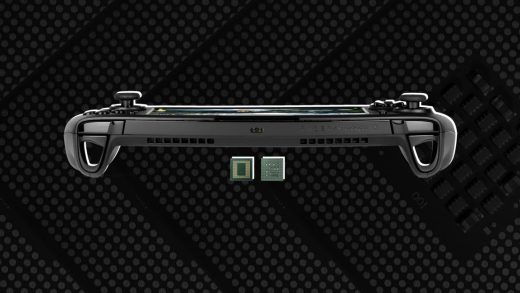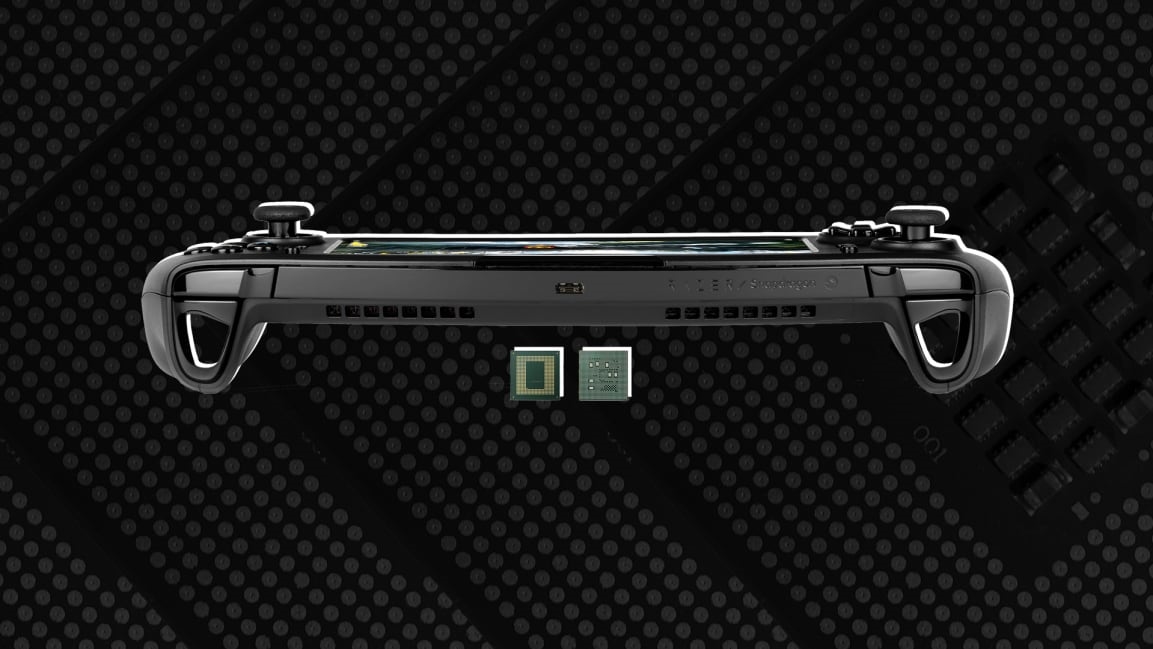Here’s Qualcomm and Razer’s take on a stand-alone gaming handheld
Mobile chip kingpin Qualcomm and gaming hardware maker Razer are betting that a new wave of faster and more powerful dedicated handheld gaming devices will soon be the objects of gamers’ desire.
The two companies worked together to build a prototype version of such a device, which is powered by a new Qualcomm system-on-a-chip called the Snapdragon G3x, which was designed specifically for dedicated mobile gaming devices. The companies announced the new prototype device and the new gaming chip at Qualcomm’s annual Snapdragon Tech Summit on Wednesday.

This month, Razer will begin distributing the new prototype Android device to developers to help them start creating games for the new hardware. Although no plans or timing have been announced, Razer is likely to release a consumer product that’s similar to the developer prototype sometime in the next year. Qualcomm believes other hardware makers will use the G3x chipsets in their own gaming device designs.
They’d be hopping on a trend that’s already gaining steam. CNET’s Scott Stein recently called 2021 “the year of the handheld,” stating that the debut of Valve’s Steam Deck and Nintendo’s new update to its 4-year-old Switch (now with an OLED display), are driving the buzz around handheld gaming. Panic’s quirky-cool Playdate and Analogue’s retro Pocket handhelds are also worthy of mention.
Qualcomm and Razer’s prototype device can run all Android games, play content from cloud gaming libraries (such as Xbox Cloud Gaming and Steam Remote Play), and stream games from gaming consoles and PCs, the companies say. Micah Knapp, senior director of product management at Qualcomm, tells me gamers are more loyal to games than to platforms, and that they like having access to all of their games in one place. “You have to observe the behavior: Gamers are just gamers; they’re cross-platform,” he says.

Asked why Qualcomm and Razer are convinced that now is the right time to bet big on dedicated mobile gaming devices, Knapp says that even during the pandemic it was mobile gaming, not PC or console gaming, that grew fastest. He cites Newzoo data saying that mobile gaming revenue (including phone, tablet, and handheld gaming devices) has grown 15% during the past year and now accounts for 52% of all gaming revenue, while PC gaming accounts for 21% and console gaming accounts for 28%.
Qualcomm and Razer believe there are still a lot of smartphone gamers who will opt for more powerful dedicated mobile gaming devices. Knapp says gamers and game developers continually ask for more processing power and graphics quality, regardless of the platform they’re gaming on.
Mobile gaming beyond smartphones
The prototype device, which is roughly 11 inches across, has large grips at both sides and looks fairly similar to gaming controllers used with console games, with its own built-in screen. The display is 6.65 inches on the diagonal, which is not much larger than most high-end smartphones. For example, Samsung’s Galaxy S21 Ultra 5G has a 6.8-inch screen.
When I got to try the device for myself, its overall size was a bit larger than I anticipated, but that turned out to be a good thing. Its size resists giving the impression of being toy-like, and also makes holding the thing in both hands for extended periods more comfortable. Razer clearly put some thought into the weight of the device, too—at just over 500 grams it’s not heavy, but when you pick it up it feels like you’re holding something solid. The developer kit allows game creators to easily map the joysticks and buttons situated on both sides of the device to their own games.
For the time being, the new G3x chip and the prototype device are mainly big news for developers.
Taken together, all of these design decisions create a more robust gaming experience than what you get on a smartphone. Yet most mobile gameplay still happens on smartphones. And smartphones, of course, aren’t built specifically for gamers, so some aspects of their design put limitations on some aspects of gaming. For instance, the chips inside smartphones rely on passive cooling (no fan), which limits the speed at which the processor can run. The G3x prototype device raises that ceiling by using a small fan to keep its innards cool.
This also affects the performance of the Qualcomm Adreno graphics processing unit (GPU) in the G3x. The prototype device supports video frame rates of up to 120Hz, matching high-end smartphones. The G3x chip is powerful enough to deliver frame rates up to 144Hz, Qualcomm says. The prototype device can also port gameplay to a TV using a USB-C to HDMI cable.
During my hands-on demo, I played Minecraft Dungeons (Xbox Cloud Gaming), Air Derby 2 by Snapdragon Studios, and Asphalt 9 from Gameloft on the Qualcomm-Razer device. In those games at least, the combination of high resolution and frame rate created a gaming experience that seemed smoother and more vivid than phone-based games.

The device also supports haptic engines at both hand grips that deliver vibrations well beyond what a smartphone can do, with significantly bigger and more powerful engines than those in smartphones. During gameplay this contributed a heightened immersive feel relative to smartphone gaming.
On smartphones, the front-facing camera is located at the top of the device in portrait orientation; when holding the phone in landscape mode during gameplay, that puts the camera in an awkward position. The G3x prototype device puts a 5-megapixel 1080p webcam just above the display. This lets gamers capture and stream video of themselves playing games to their audiences on social platforms such as Twitch. The device uses two microphones to pick up the player’s voice.
The prototype uses a four-speaker system to play sounds. The G3x chipset also supports a surround sound effect when the user plugs in a Snapdragon-powered headset or earbuds, Qualcomm says.

In order for cloud-based games to run smoothly and without lag, gaming devices rely on a fast and uninterrupted connection to the cloud. The G3x chipset includes Qualcomm’s fastest 5G chip, which supports 5G mmWave (the fastest kind of 5G service) as well as sub-6. It also connects to Wi-Fi 6 or 6E networks.
For the time being, the new G3x chip and the prototype device are mainly big news for developers. But Qualcomm and Razer are wise to try to fire up the gaming ecosystem around a new wave of dedicated Android gaming devices. Even if gamers can’t buy devices based on this platform yet, they’ll want there to be plenty of titles optimized for it by the time the first devices show up.
Fast Company , Read Full Story
(40)



